The DeepCool PX850G 850W PSU Review: Less Than Quiet, More Than Capable
by E. Fylladitakis on March 26, 2024 9:00 AM EST- Posted in
- Cases/Cooling/PSUs
- PSUs
- Deepcool
- ATX v3.0
- 12VHPWR
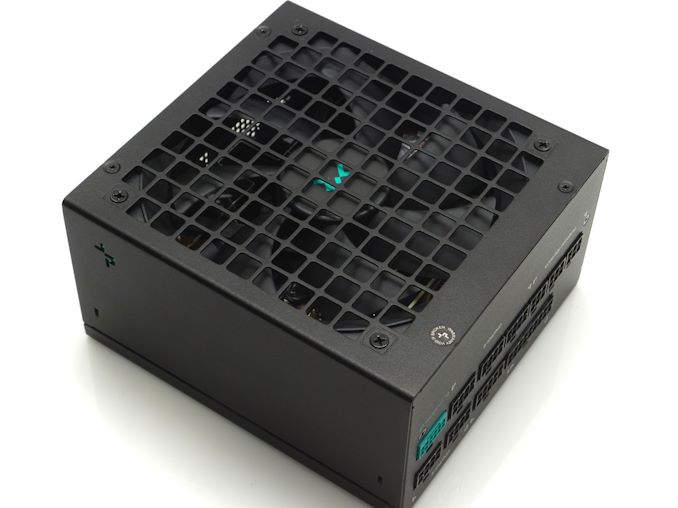
DeepCool is one of the few veterans in the PC power & cooling components field still active today. The Chinese company was first founded in 1996 and initially produced only coolers and cooling accessories, but quickly diversified into the PC Case and power supply unit (PSU) markets. To this day, DeepCool stays almost entirely focused on PC power & cooling products, with input devices and mousepads being their latest diversification attempt.
Today's review turns the spotlight toward DeepCool’s PSUs and, more specifically, the PX850G 850W ATX 3.0 PSU, which currently is their most popular power supply. The PX850G is engineered to balance all-around performance with reliability and cost, all while providing ATX 3.0 compliance. It is based on a highly popular high-output platform but, strangely, DeepCool rated the PX850G for operation up to 40°C.
| DeepCool PX850G Power specifications ( Rated @ 40 °C ) |
|||||
| RAIL | +3.3V | +5V | +12V | +5Vsb | -12V |
| MAX OUTPUT | 22A | 22A | 70.8A | 3A | 0.3A |
| 120W | 849.6W | 15W | 3.6W | ||
| TOTAL | 850W | ||||
| 80PLUS RATING | Gold | ||||
| AC INPUT | 100 - 240 VAC, 50 - 60 Hz | ||||
| MSRP | $113 | ||||
Packaging and Bundle
The DeepCool PX850G 850W PSU comes in straightforward packaging, with a minimalist cardboard box accented by a decorative ribbon for a bit of flair. The unit is well-protected during shipping, enclosed in a nylon bag and surrounded by foam inserts. Key specifications and an overview of the PSU’s performance are clearly printed on the rear side, giving browsing buyers a quick glance at what to expect from the product.
DeepCool supplies the typical necessary mounting screws and AC power cable, but also a jump-start adapter and four reusable cable straps for a little additional value. There is also a small envelope with documentation inside.
This power supply unit is distinguished by its fully modular design, allowing for the detachment of all DC power cables, including the 24-pin ATX connector. The cables are black, from their connectors to the wires. All are without sleeving, creating a uniform visual design.
| DeepCool PX850G | ||
| Connector type | Hardwired | Modular |
| ATX 24 Pin | - | 1 |
| EPS 4+4 Pin | - | 2 |
| EPS 8 Pin | - | - |
| PCI-E 5.0 | - | 1 |
| PCI-E 8 Pin | - | 3 |
| SATA | - | 8 |
| Molex | - | 4 |
| Floppy | - | - |
The DeepCool PX850G 850W ATX 3.0 PSU
External Appearance
The DeepCool PX850G 850W PSU is housed in a chassis that measures 86 mm × 150 mm × 160 mm (H × W × D), making it just a bit longer than the typical ATX standard dimensions. This size allows the power supply unit to integrate smoothly into most tower PC cases, with the sole exception being compact and some HTPC/Cubic PC case designs. Despite its size, the length is a necessary sacrifice for the unit to accommodate its 135 mm cooling fan.
DeepCool has focused on the external design of the PX850G 850W PSU, reflecting a balance between aesthetics and functionality. The power supply unit sports a satin black finish, with the company's logo discreetly punched on both sides of the chassis. The integrated fan finger guard showcases a distinctive square design, differentiating it from typical round guards. An information sticker, detailing the PSU's specifications and certifications, is located on the top of the unit.
Typically, the power switch and AC input receptacle can be found on the rear side, with a push button that can be used to turn the hybrid fan mode off and force the unit’s fan to stay on at all times. The front side is dedicated to the modular connectors, each with a simplistic white label for quick identification. A standout feature is the inclusion of a turquoise 12VHPWR connector, underscoring the unit's compliance with the latest ATX 3.0 standards with a little bit of visual flair.
Internal Design
The DeepCool PX850G 850W PSU comes with a Hong Hua HA13525H12SF-Z 135 mm fan, featuring an FDB engine. These fans are popular and known for their high quality. This particular fan operates at a very high maximum speed of 2300 RPM, an impressive figure for a 135 mm fan tasked with cooling an 850W unit.
The DeepCool PX850G 850W PSU is crafted by Channel-Well Technologies (CWT), a distinguished OEM renowned for its expertise in developing mid to high power output PC power supplies. CWT's legacy as a venerable OEM is well-established, with their platforms found in some of the most popular products of all time.
The DeepCool PX850G 850W PSU architecture is based on tried and true topologies, with no surprises to be seen. At the power supply's input, the filtering stage is slightly enhanced over the minimum baseline suggested by the ATX design guide, featuring four Y capacitors, two X capacitors, and two filtering inductors. This is followed by two rectifying bridges, both attached to their dedicated heatsink. The Active Power Factor Correction (APFC) circuitry takes a significant amount of space, with the main heatsink holding the active components along the PCB's perimeter. The APFC transistors are two Infineon 6R125P6 MOSFETs and a diode. The APFC also includes an encased filtering inductor and two large capacitors (a Nippon Chemi-Con 330 μF and a Rubycon 470 μF).
In the primary inversion stage of the DeepCool PX850G 850W PSU, a half-bridge LLC topology is implemented, with the two power transistors mounted on a substantial dedicated heatsink—a configuration prevalent in modern power supplies for its low cost and dependability. The secondary conversion stage consists of six Onsemi 5C430N transistors on a vertical daughterboard, generating a single 12V output. The 3.3V and 5V outputs are managed by DC-to-DC conversion circuits on another daughterboard.
On the secondary side, the DeepCool PX850G 850W PSU features capacitors from Rubycon and Nippon Chemi-Con, alongside several Nichicon polymer capacitors. This mix of highly reputable Japanese manufacturers makes the PX850G an all-Japanese affair which assists both the company’s marketing efforts and the consumer’s peace of mind.


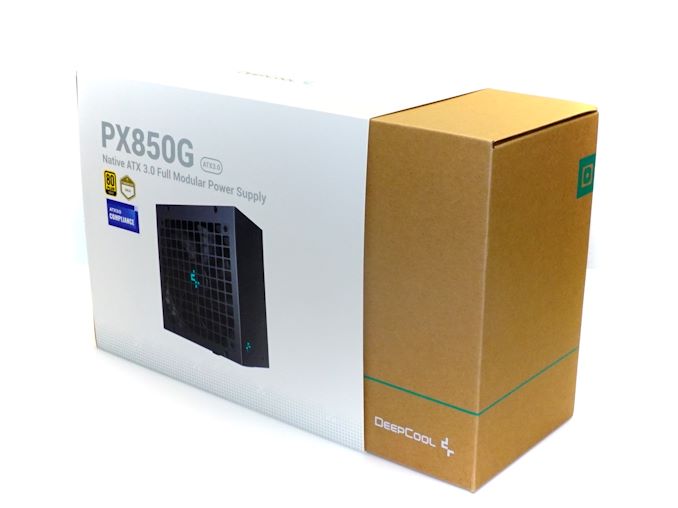

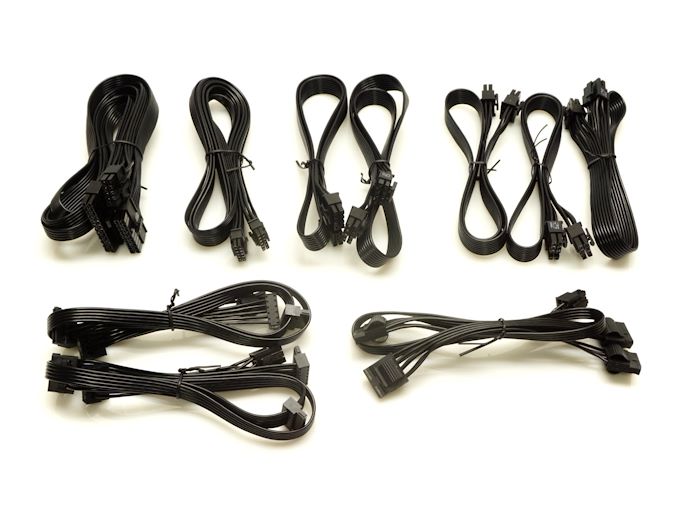
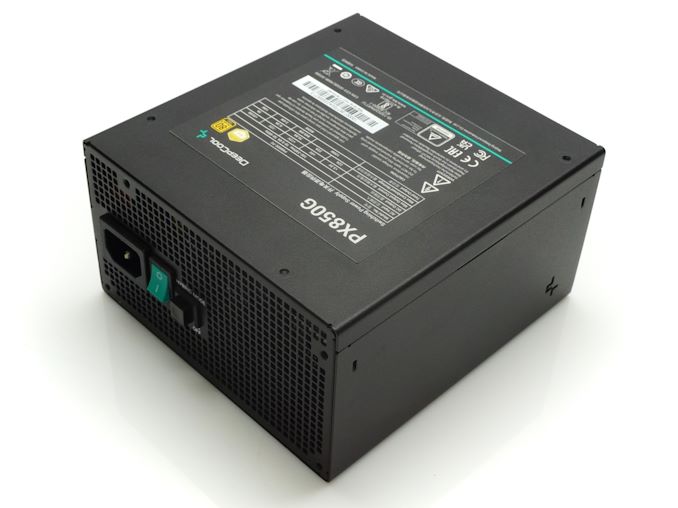



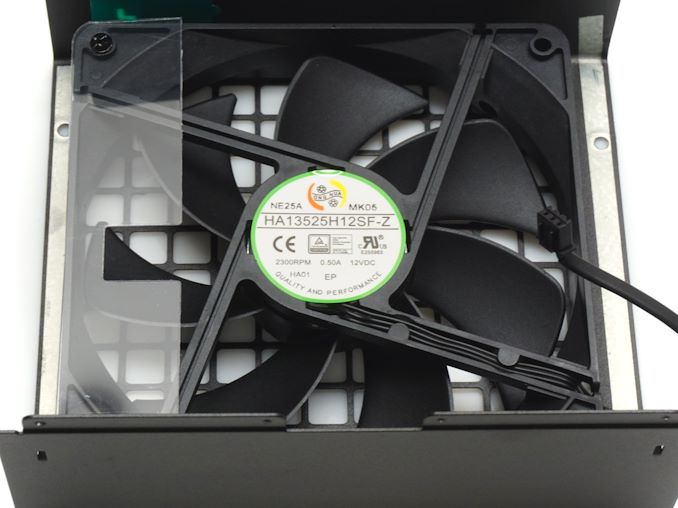

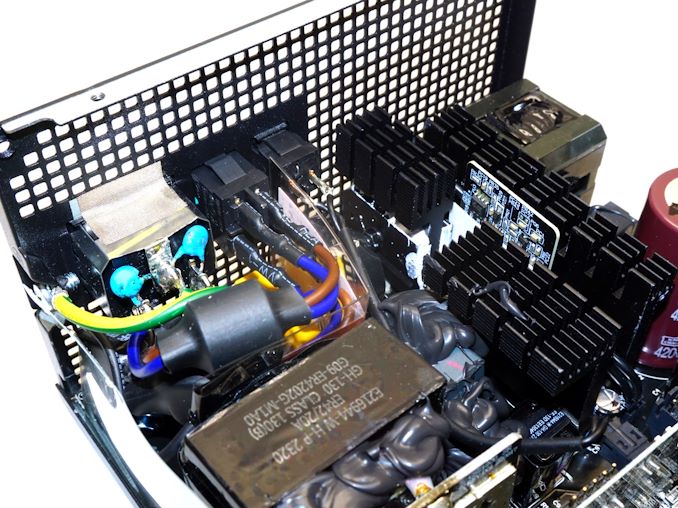
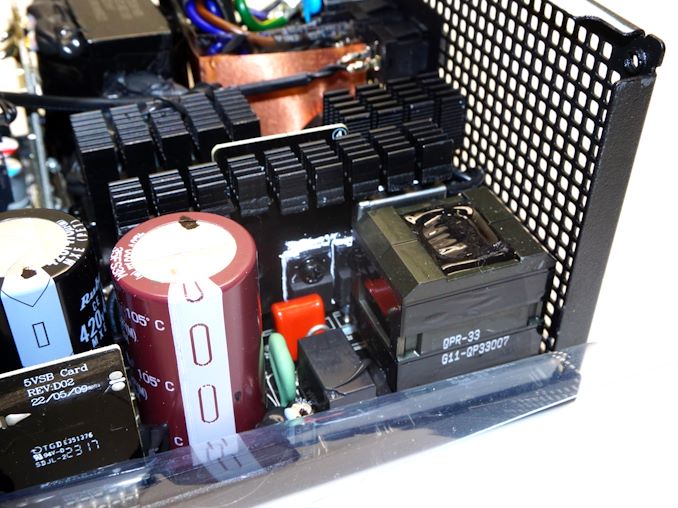
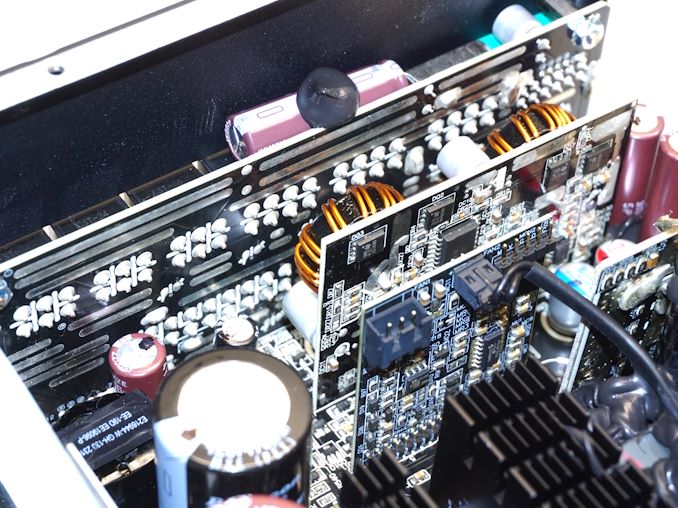
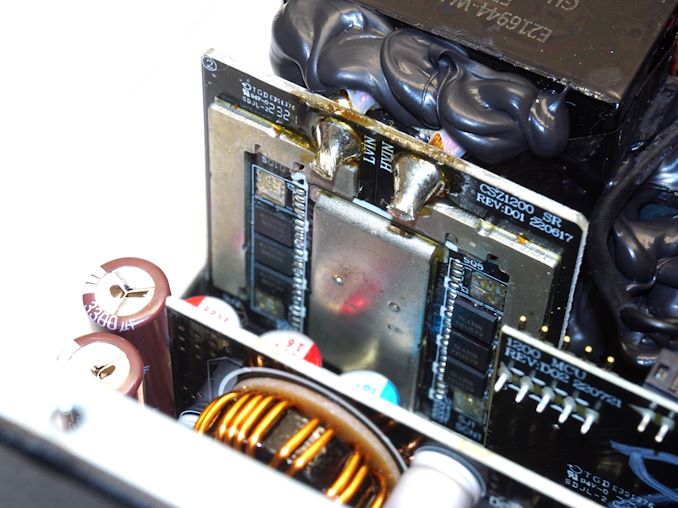
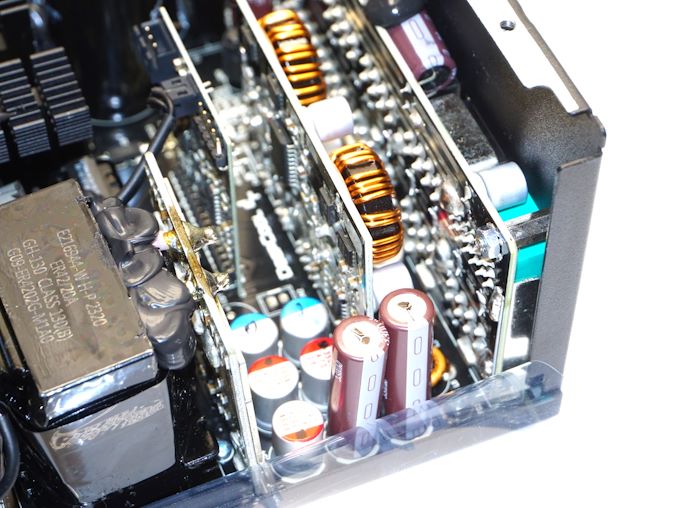








6 Comments
View All Comments
GeoffreyA - Tuesday, March 26, 2024 - link
I haven't tried their power supplies, but the case I'm using is DeepCool's Tesseract. No complaints, and the fans have worked well for five years.Tunnah - Tuesday, March 26, 2024 - link
"..a significant decrease in efficiency, with figures dropping to 87.9% under a 115 VAC input and 89.5% with a 230 VAC source, compared to 89% and 90.5%, respectively.."1.1% and 1% is significant ? Doesn't that boil down to a difference of a few watts ?
PeachNCream - Tuesday, March 26, 2024 - link
When you're writing an article it can be difficult to think about things from an outside perspective. AT has noted via response to comments in the past that there isn't a review like one would find an editor performing before publication so they sometimes rely on readers pointing out things that could be improved and make edits after an article is out the door.I can't recall many Anandtech articles that haven't had suggestions from readers in the past probably six or so years. It shows the effectiveness of crowdsourced post-publication review to improve article quality and has been helpful so I believe feedback like yours is always beneficial when there isn't a team of professional writers and editors available.
And, to be fair, even well-known news sites are in a hurry and cost-sensitive so I see actual paid professional articles with the rare error or typo that slips out before publication. One or two errors per article isn't too bad considering Future doesn't have the same hiring power as an established, well-known company.
Samus - Wednesday, March 27, 2024 - link
Weird comment.Ryan Smith - Tuesday, March 26, 2024 - link
1% absolute is significant when you're talking about energy losses. Even though this is only a Gold PSU (a couple steps down from ultra-efficient Titanium), that's still an effective increase in energy losses of 10%.It's typical and expected for PSUs to lose efficiency in our hot box testing. We've had Gold PSUs fare better than this, though.
E.Fyll - Friday, March 29, 2024 - link
It does. However, that few Watts worth of difference merely due to the elevated temperature, from a technical point of view, is a major concern. The greater the difference, the more the active components are getting thermally stressed. Ideally, a great unit should have a very small difference in performance when the ambient temperature changes by ~20C, as long as the temperature remains under the unit's maximum rating.